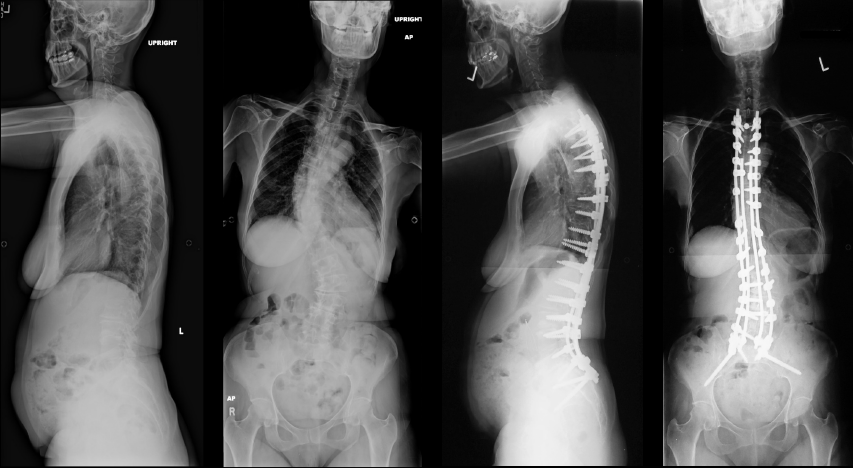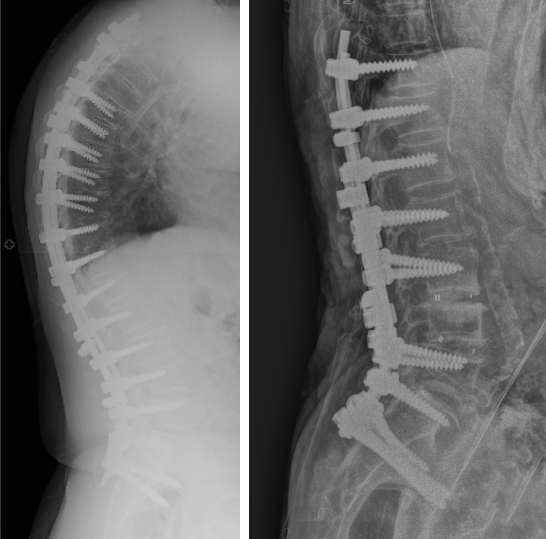Adult Spinal Deformity

Natural curves are present throughout the spine. However, patients may develop abnormal curvature throughout their lifetime, which can introduce twists in the spine to create a deformity. This condition is scoliosis, and can be categorized into two types: idiopathic and degenerative.
Idiopathic Scoliosis:
Idiopathic scoliosis by definition is an abnormal curve formed due to an unknown cause. Curvature usually begins mildly and progresses slowly over time. The curve may have started in adolescence and continued in adulthood. Common indicators of idiopathic scoliosis are shoulder asymmetry, a rib hump or prominence of the lower back.
Degenerative Scoliosis:
Degenerative scoliosis occurs in adults. It may be caused by degeneration or collapsing of the discs, or due to arthritis of the joints between two vertebral bodies.
Symptoms:
In addition to possible physical deformities, common symptoms of scoliosis include:
- Low back pain and stiffness
- Numbing or pain in the legs
- Fatigue.
Evaluations:
Patients are evaluated with standing x-rays, to determine the magnitude of the curve and their overall alignment. Magnetic resonance imaging (MRI) study may also be used to evaluate neurologic abnormalities that may have been presented during their physical examination.
TREATMENTS
Non-Operative
Many patients are able to manage their symptoms through a non-operative approach, which include:
- Exercises that aim to strengthen core muscles and to improve posture and flexibility, with or without a physical therapist
- Braces can be worn for short-term pain relief
- Use of pain medications
- Consulting a pain management physician to provide stronger relief with the use of epidurals or nerve block injections.
Operative
Patients who have failed conservative management and are greatly disabled, may elect to undergo surgical treatment. Depending on the source of the pain or neurologic decline, possible treatments may include:
- Decompression to relieve pressure
- Spinal fusion to fixate the spine
- Osteotomy, a procedure to resect part of the bone to allow for extensive realignment.
There are many advancements in the surgical treatment of adult spinal deformity. With the constant evolution of technology, the ISSG aims to stay on the forefront of improving patient care in the form of research.


